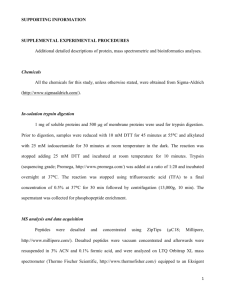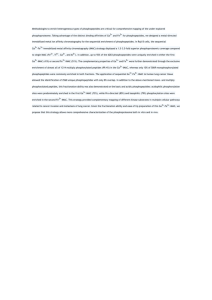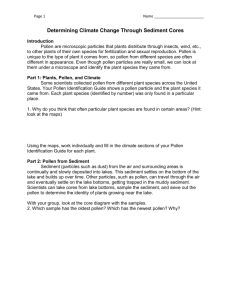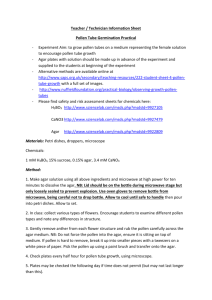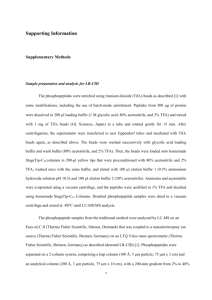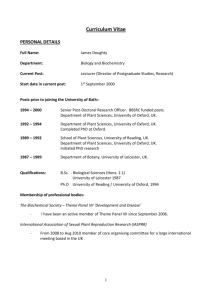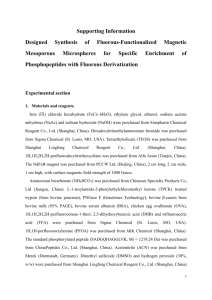TPJ_5061_sm_Supporting-legends
advertisement
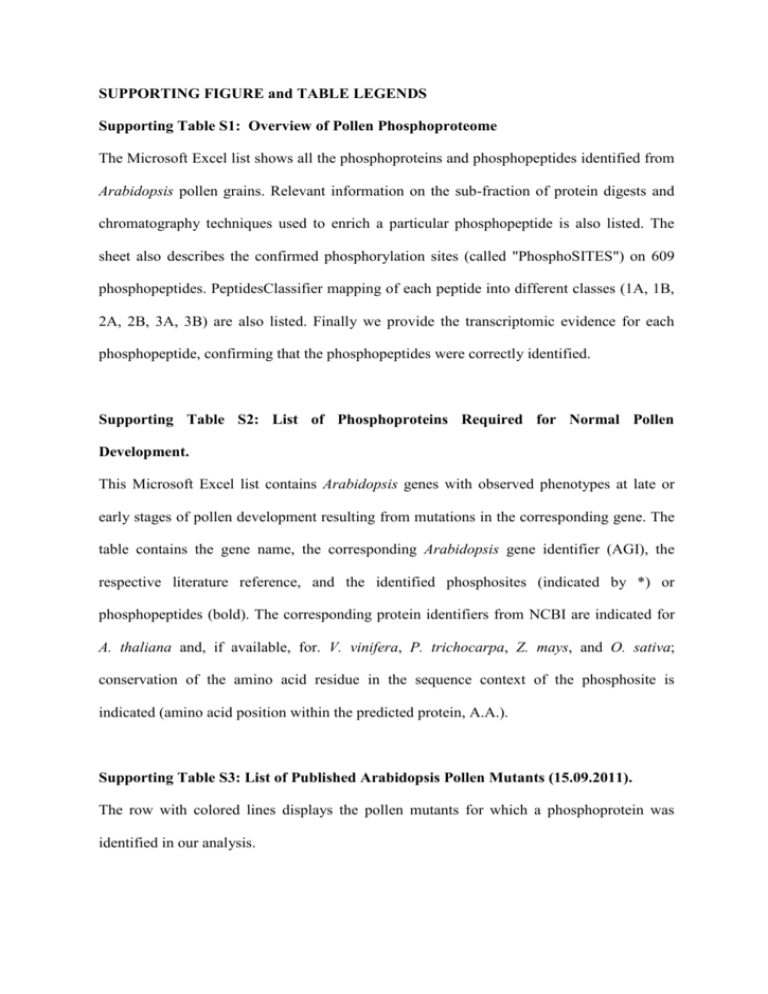
SUPPORTING FIGURE and TABLE LEGENDS Supporting Table S1: Overview of Pollen Phosphoproteome The Microsoft Excel list shows all the phosphoproteins and phosphopeptides identified from Arabidopsis pollen grains. Relevant information on the sub-fraction of protein digests and chromatography techniques used to enrich a particular phosphopeptide is also listed. The sheet also describes the confirmed phosphorylation sites (called "PhosphoSITES") on 609 phosphopeptides. PeptidesClassifier mapping of each peptide into different classes (1A, 1B, 2A, 2B, 3A, 3B) are also listed. Finally we provide the transcriptomic evidence for each phosphopeptide, confirming that the phosphopeptides were correctly identified. Supporting Table S2: List of Phosphoproteins Required for Normal Pollen Development. This Microsoft Excel list contains Arabidopsis genes with observed phenotypes at late or early stages of pollen development resulting from mutations in the corresponding gene. The table contains the gene name, the corresponding Arabidopsis gene identifier (AGI), the respective literature reference, and the identified phosphosites (indicated by *) or phosphopeptides (bold). The corresponding protein identifiers from NCBI are indicated for A. thaliana and, if available, for. V. vinifera, P. trichocarpa, Z. mays, and O. sativa; conservation of the amino acid residue in the sequence context of the phosphosite is indicated (amino acid position within the predicted protein, A.A.). Supporting Table S3: List of Published Arabidopsis Pollen Mutants (15.09.2011). The row with colored lines displays the pollen mutants for which a phosphoprotein was identified in our analysis. Supporting Table S4: Pollen-enriched phosphoproteins. The table lists the phosphoproteins that were exclusively identified in our study and are missing from the large-scale phosphoproteome database (PhosPhAt, dated 17.05.2011; kindly provided by Waltraud Schulze). Supporting Table S5: List of Kinases Found in the Pollen Phosphoproteome. Supporting Table S6: List of RLKs Found in the Pollen Phosphoproteome. Interestingly, out of 46 subfamilies of RLKs only four were represented in our pollen phosphoproteome. These four families are represented by nine phosphopeptides. Seven members of RLK subfamilies were identified by information-rich peptides (class 1A and 2B). However, the last subfamily was represented only by class 3B peptides. Respective transcriptomic evidence for each subfamily is provided (based on Honys and Twell, 2004). Supporting Figure S1: Outline of Experimental Procedures. Work flow for the acquisition of the phosphopeptides from Arabidopsis mature dehydrated pollen grain. Comprehensive coverage was obtained using three different enrichment chromatographies (TiO2: Titanium dioxide, IMAC: Immobilized Metal ion Affinity Chromatography, SIMAC: Sequential elution from IMAC). Supporting Figure S2: Representation of phosphopeptide enrichment in six different SCX fractions coupled with three different phospho-enrichment chromatographies. (a) Immobilized Metal ion Affinity Chromatography (IMAC), (b) Titanium dioxide (TiO2) chromatography, and (c) Sequential elution after IMAC (SIMAC).
